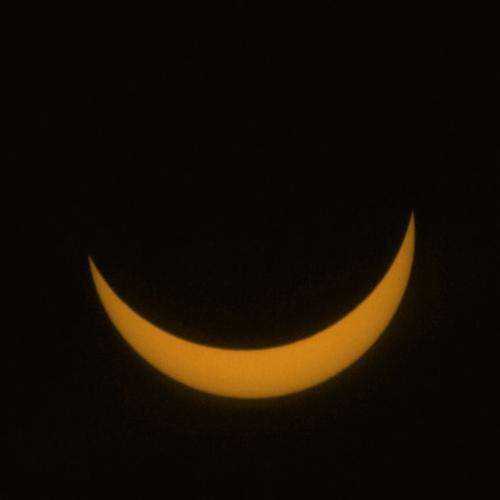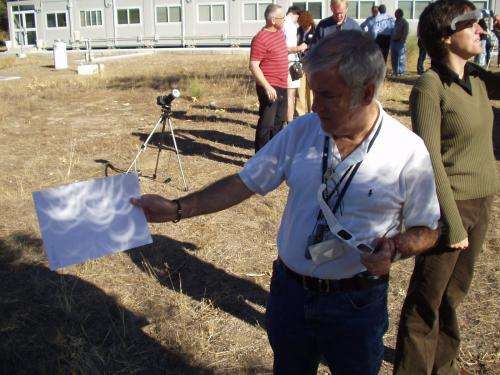UK skies set to dim in decade's deepest solar eclipse

On 20 March a total eclipse of the Sun will take place, visible from the North Atlantic Ocean. Observers in the UK and Ireland will see a partial solar eclipse, with up to 97% of the Sun blocked out. This will be the deepest eclipse in the UK since 1999 and until 2026.
Total solar eclipses take place when the Earth, Moon and Sun are almost precisely aligned and the shadow of the Moon touches the surface of the Earth. At mid-eclipse, observers within the lunar shadow briefly see totality, where the silhouette of the Moon completely covers the Sun, revealing the beautiful outer solar atmosphere or corona. Totality is visible this time along a track a few hundred kilometres wide, which only intersects two landmasses, the Faroe Islands midway between Scotland and Iceland, and the arctic archipelago of Svalbard. Observers in those locations will see between two and two-and-a-half minutes of totality.
Away from the path of the total eclipse the Sun is only partly obscured by the Moon. This time the partial eclipse is visible across a large part of the northern hemisphere, including the whole of Europe, Greenland, Newfoundland, northern Africa and western Asia.
In London the partial phase of the eclipse begins at 08:25 GMT. Maximum eclipse is at 09:31 GMT when 85% of the Sun will be blocked. The eclipse ends at 10:41 GMT. Further north in the British Isles, observers enjoy an even better view. From Edinburgh 93% of the Sun will be covered and from Lerwick in the Shetland Isles, the Moon will obscure 97% of the solar disk.
Although eclipses of the Sun are spectacular events, they should NOT be viewed with the unaided eye except during the brief period of totality, which this time will not be visible anywhere in the UK. Despite a large part of the solar disk being covered, looking at the partially eclipsed Sun without appropriate protection can cause serious and permanent damage to the eyes.

The Royal Astronomical Society is backing the stance of Public Health England and the Royal College of Ophthalmologists, who are warning about the risk of eye damage from looking at the Sun. With the Society for Popular Astronomy (SPA), the RAS has produced a booklet on how to safely view the eclipse that suggests a number of ways to project the solar image rather than looking at the Sun directly.
On the morning of 20 March, amateur astronomical societies and public observatories will be running events where members of the public can safely enjoy the eclipse. The RAS and the Baker Street Irregular Astronomers (BSIA) will be running a joint (free) event in Regent's Park, central London, where members of the public can come and view the eclipse using appropriate equipment at no cost.
Provided by Royal Astronomical Society

















